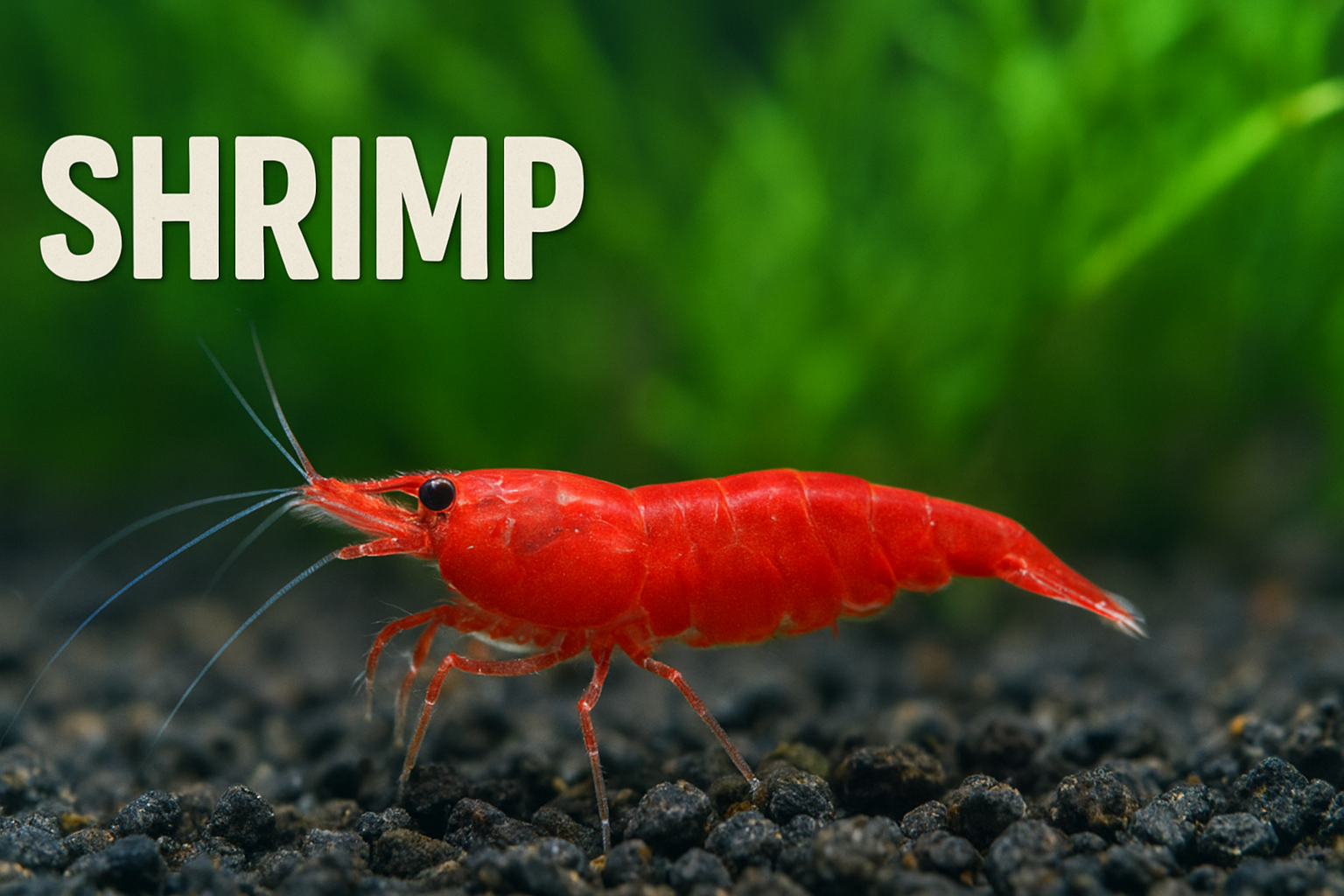Aquarium keeping has become one of the most popular hobbies around the world, and while fish are the most common choice, more and more hobbyists are turning their attention to aquarium shrimp. These tiny, fascinating creatures add beauty, diversity, and balance to tanks of all sizes. From their vibrant colors to their unique behaviors, aquarium shrimp have earned a special place in freshwater aquascaping and nano tank setups.
In this comprehensive guide, we will cover everything you need to know about aquarium shrimp – including their benefits, types, care requirements, breeding, diet, tank setup, and compatibility with other aquatic species. Whether you are a beginner or an experienced aquarist, this article will serve as a detailed resource to help you succeed in keeping shrimp.
Why Choose Aquarium Shrimp?
Keeping shrimp in an aquarium is not just about aesthetics. These small invertebrates offer several advantages:
- Natural Tank Cleaners – Shrimp are excellent scavengers. They feed on algae, decaying plant matter, and leftover fish food, helping to keep the tank clean.
- Adds Color and Beauty – Many aquarium shrimp species come in striking colors like red, blue, yellow, orange, and even multi-colored patterns. They stand out against plants and substrate, adding vibrancy to the aquarium.
- Peaceful Tank Mates – Most freshwater shrimp species are non-aggressive and do well in community tanks with other peaceful species.
- Great for Nano Tanks – Unlike larger fish, shrimp thrive in small tanks, making them a perfect choice for nano aquariums and aquascaped setups.
- Breeding Potential – Many shrimp species breed readily in aquariums, allowing you to create a sustainable population without frequent purchases.
Popular Types of Aquarium Shrimp
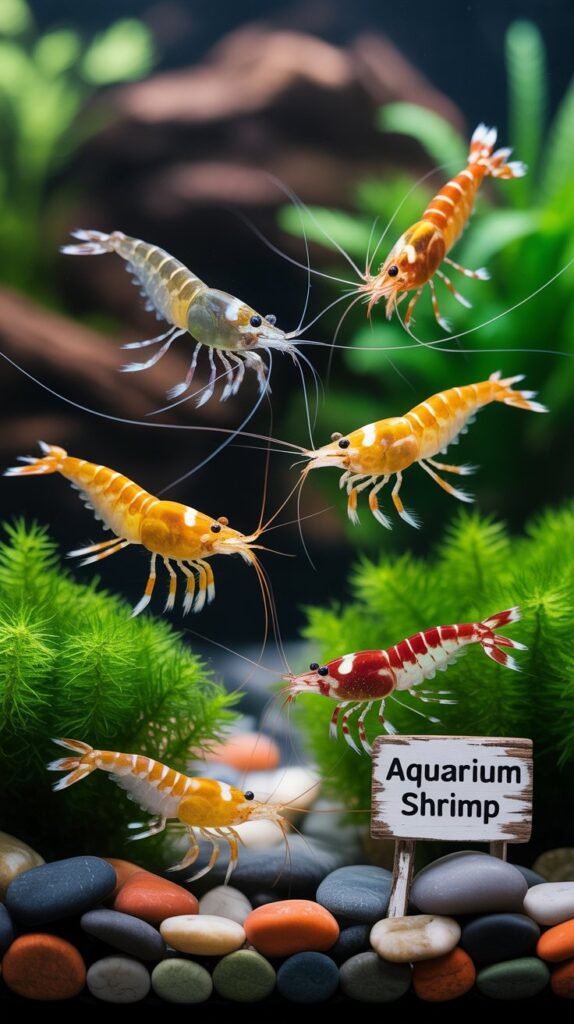
There are hundreds of freshwater shrimp species worldwide, but only a handful are commonly kept in aquariums. Let’s look at the most popular ones:
1. Cherry Shrimp (Neocaridina davidi)
- One of the most beginner-friendly shrimp.
- Available in various color grades, with red being the most common.
- Hardy, easy to breed, and thrives in community tanks.
2. Crystal Red Shrimp (Caridina cantonensis)
- Known for their striking red and white patterns.
- Require slightly more care and stable water parameters.
- Often kept by intermediate to advanced shrimp keepers.
3. Amano Shrimp (Caridina multidentata)
- Larger than most shrimp species.
- Famous for being excellent algae eaters.
- Not easy to breed in freshwater since larvae need brackish water.
4. Blue Dream Shrimp
- A selectively bred strain of Neocaridina shrimp.
- Brilliant blue coloration, highly sought after in aquascaping.
- Easy to care for and breed like Cherry Shrimp.
5. Ghost Shrimp (Palaemonetes paludosus)
- Transparent bodies make them unique.
- Often sold as feeder shrimp but also kept as pets.
- Very affordable and hardy.
6. Tiger Shrimp (Caridina mariae)
- Striped patterns resembling tiger stripes.
- Require clean water and more attention compared to Neocaridina species.
7. Bee Shrimp
- Includes Crystal Red and Crystal Black Shrimp variations.
- Loved by hobbyists for their intricate color patterns.
8. Babaulti Shrimp
- Less common but hardy.
- Comes in multiple colors, including green.
Setting Up an Aquarium for Shrimp
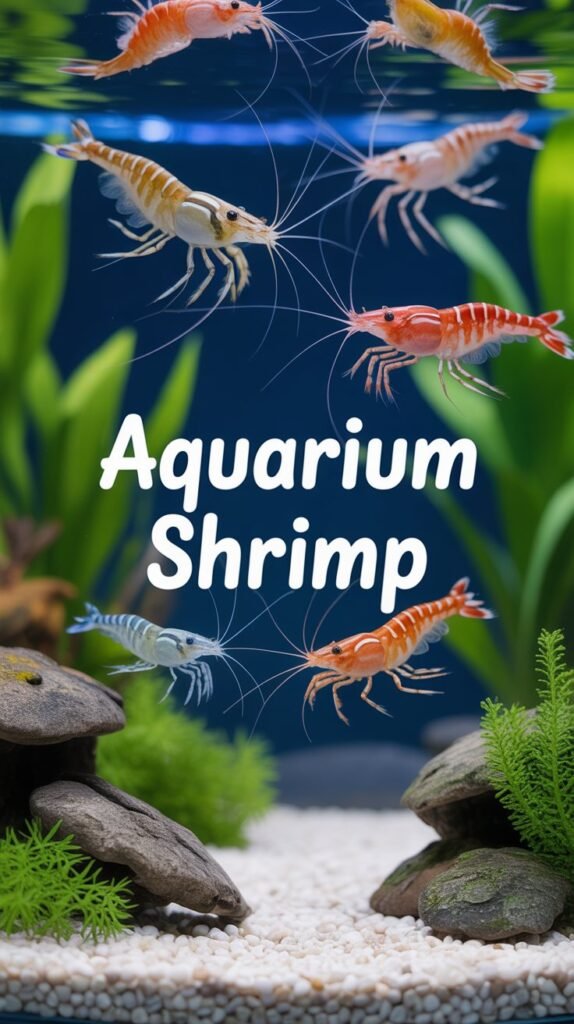
Creating the right environment is key to keeping aquarium shrimp healthy and thriving.
Tank Size
- A 5 to 10-gallon tank is ideal for beginners.
- Smaller tanks are possible but require more careful maintenance.
Substrate
- Shrimp prefer fine-grain substrate such as sand or shrimp-specific soil.
- Dark substrate enhances shrimp coloration.
Plants and Decorations
- Live plants are highly recommended as they provide hiding spaces, food sources (biofilm), and oxygen.
- Popular plants include Java Moss, Anubias, Java Fern, and Dwarf Hairgrass.
- Driftwood and rocks can also be added for hiding places.
Filtration
- Use a sponge filter to prevent baby shrimp from being sucked in.
- Sponge filters also promote biofilm growth, which shrimp love to eat.
Water Parameters
Different shrimp species require different water conditions, but here are general guidelines:
- Temperature: 70–78°F (21–26°C)
- pH: 6.5–7.5 (slightly acidic to neutral)
- GH: 4–8 (General Hardness)
- KH: 2–5 (Carbonate Hardness)
- Ammonia & Nitrite: 0 ppm (toxic for shrimp)
- Nitrate: Below 20 ppm
Lighting
- Moderate lighting works best.
- Too much light can encourage algae growth, while too little can reduce plant health.
Feeding Aquarium Shrimp
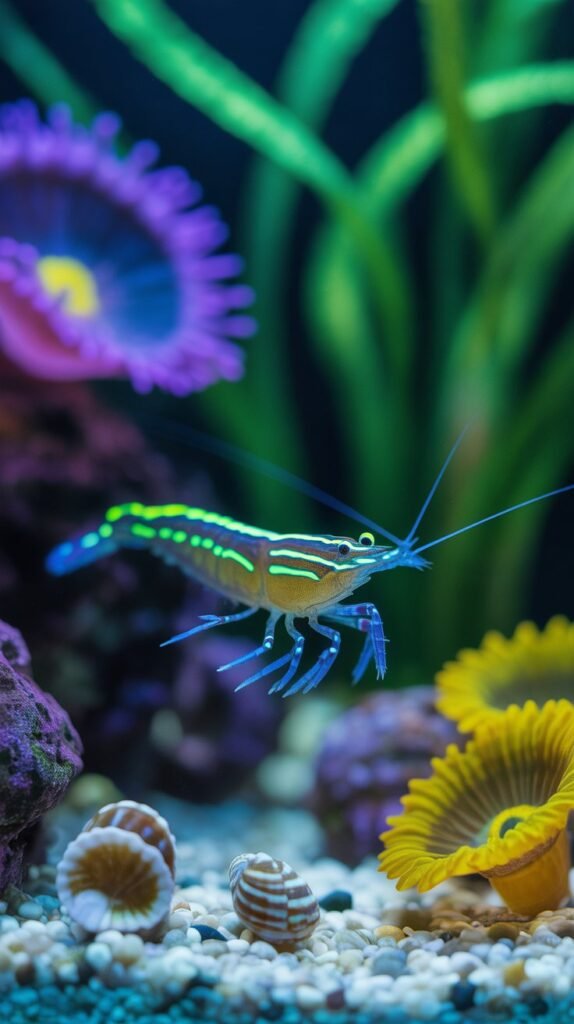
Shrimp are omnivores and will eat a variety of foods.
Natural Diet
- Biofilm (microorganisms growing on surfaces)
- Algae
- Decaying plant matter
Supplementary Diet
- High-quality shrimp pellets
- Blanched vegetables (spinach, zucchini, cucumber)
- Algae wafers
- Specialized shrimp food rich in minerals
Feeding Tips
- Feed only small amounts once per day.
- Remove uneaten food to prevent water quality issues.
- Shrimp often graze all day, so don’t worry if they seem to eat constantly.
Breeding Aquarium Shrimp
One of the most rewarding aspects of shrimp keeping is watching them breed.
Neocaridina (e.g., Cherry Shrimp)
- Very easy to breed in freshwater.
- Females carry eggs (called being “berried”) for 3–4 weeks before hatching.
- Baby shrimp look like miniature adults and feed on biofilm.
Caridina (e.g., Crystal Red Shrimp)
- More sensitive to water parameters.
- Breeding requires stable, clean conditions.
- Produces fewer offspring compared to Neocaridina.
Amano Shrimp
- Cannot breed successfully in freshwater.
- Larvae need brackish water to survive.
Tips for Successful Breeding:
- Keep a stable environment.
- Provide plenty of hiding spots for babies.
- Avoid aggressive tank mates that might eat the young.
Common Problems with Aquarium Shrimp
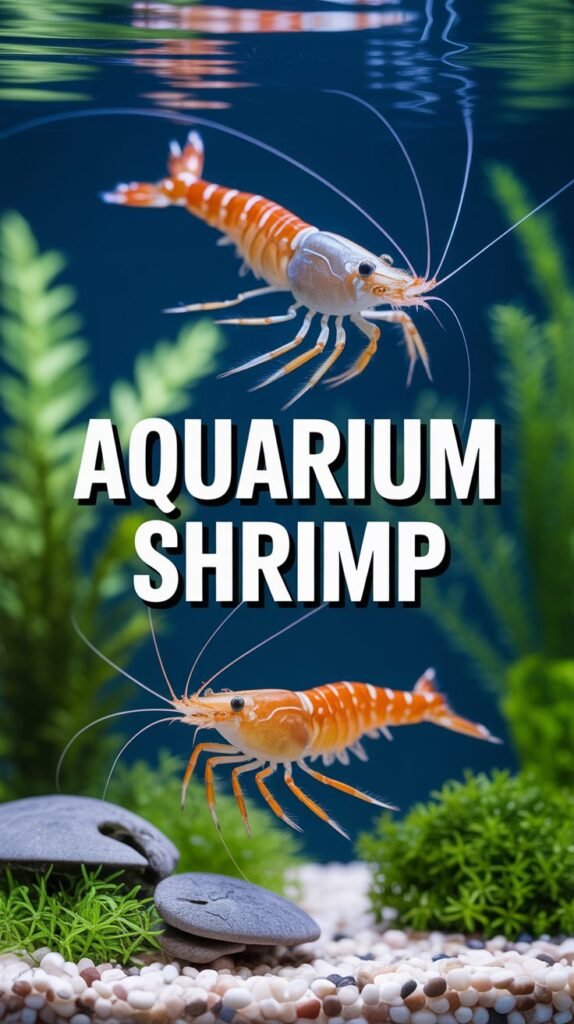
- Molting Issues – Shrimp shed their exoskeleton to grow. If water parameters are unstable, molting problems can occur.
- Sudden Deaths – Often caused by poor water quality, copper in tap water, or overfeeding.
- Predation – Many fish see shrimp as food. Always research compatibility.
- Colony Collapse – Happens if breeding stops due to stress or unstable conditions.
Compatible Tank Mates for Aquarium Shrimp
Shrimp do best with peaceful tank mates. Good companions include:
- Small fish like neon tetras, ember tetras, endlers, and guppies.
- Other invertebrates like snails.
- Avoid aggressive or predatory fish like bettas, cichlids, and large catfish.
Many hobbyists prefer shrimp-only tanks to ensure maximum survival rates and to enjoy their natural behaviors.
Benefits of Aquarium Shrimp in Aquascaping
- Their tiny size makes them perfect for planted aquariums.
- Constant grazing helps prevent algae overgrowth.
- They don’t disturb plants like some fish species do.
- Active and colorful, they add life to aquascapes.
Maintenance Tips for Shrimp Tanks
- Perform 10–20% water changes weekly.
- Always use dechlorinated water.
- Avoid medications or chemicals containing copper (toxic to shrimp).
- Keep the tank cycled before introducing shrimp.
- Monitor water parameters regularly.
Conclusion
Aquarium shrimp are fascinating, colorful, and beneficial additions to any tank. They are relatively easy to care for, especially species like Cherry Shrimp and Ghost Shrimp, making them perfect for beginners. Advanced keepers can enjoy the challenge of breeding more sensitive species like Crystal Red Shrimp. With the right setup, diet, and care, shrimp can thrive, breed, and bring endless enjoyment to aquarists.
FAQs about Aquarium Shrimp
Q1: Are aquarium shrimp hard to keep?
Most shrimp, like Cherry Shrimp and Ghost Shrimp, are easy to keep if water quality is stable. Some species, like Crystal Red Shrimp, are more sensitive.
Q2: How long do aquarium shrimp live?
Aquarium shrimp usually live between 1 to 3 years, depending on species and care.
Q3: Can shrimp live with fish?
Yes, but only with peaceful species. Avoid aggressive or large fish that may eat shrimp.
Q4: How many shrimp can I keep in a 10-gallon tank?
You can safely keep 20–30 shrimp in a 10-gallon tank, depending on filtration and plant cover.
Q5: Do shrimp need a heater?
It depends on your climate and shrimp species. In most cases, keeping the water between 70–78°F is ideal.
Q6: Can shrimp survive in tap water?
Yes, if treated with a water conditioner to remove chlorine, chloramine, and heavy metals like copper.
Q7: What is the best shrimp for beginners?
Cherry Shrimp are the best choice due to their hardiness, availability, and ease of breeding.
Q8: Do shrimp clean the tank?
Yes, shrimp are natural scavengers that eat algae and leftover food, helping to keep the tank clean.
Q9: How do I know if my shrimp are healthy?
Healthy shrimp are active, brightly colored, and constantly grazing. Lethargy or color loss may indicate stress.
Q10: Can shrimp escape from the tank?
Yes, shrimp can climb airline tubing or decorations. A tank lid is recommended.

